
Soon Eleanor was sourcing fruit from neighbors and making cider in her basement while scrambling to learn as much as she could about cider craft and culture. In 2008, drawing upon expertise from regional orchardists, the Légers began planting their own orchard — one thousand trees, fifty-two varieties — to learn which would work best. They committed to biodynamic farming and holistic management practices to produce a natural crop, and, ultimately, a natural cider.
A decade later, the orchard has thrived, and Eleanor Léger has risen to prominence as one of American heritage cider’s most respected practitioners and advocates. Eden Specialty Ciders has expanded and now produces a mix of sparkling, still, and ice ciders, plus a line of botanical cider aperitifs. Eden’s ciders are small-batch, hand-made, old-fangled, and delicious.
I recently sat down with Eleanor to taste her expansive lineup and talk about her work and the state of the craft.
Meg Houston Maker: How do you introduce yourself when you meet someone new? How do you describe what you do?
Eleanor Léger: I say, “I started a boutique cider operation and we do dry sparkling ciders, ice ciders, and aperitif ciders from local heirloom and tannic cider variety apples.”
MHM: Do you feel that, over the last five or six years, people no longer look at you and blink and smile and move on to the next topic of conversation? Do people actually—do you know what I mean?
EL: Yes, I do know what you mean! It’s changing. It’s changing. It depends on where I am, too.
MHM: Where are the more cider-enlightened communities in the United States?
EL: New York, for sure. Chicago has a lot of cider going on. Washington, D.C., because of Anxo, a cider bar.
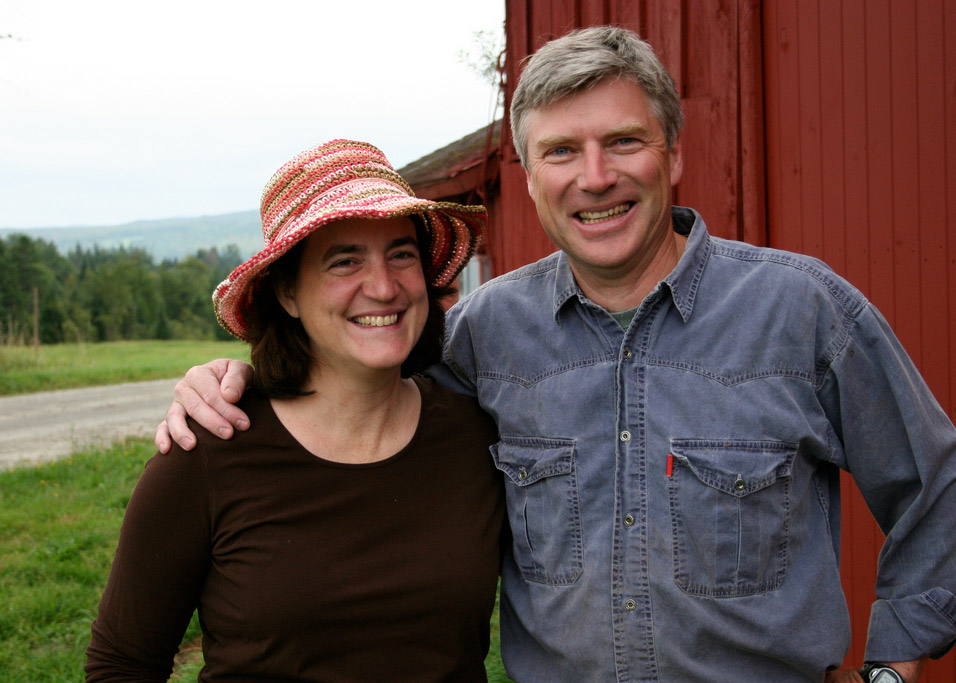
MHM: I’ve recently been exploring Vermont ciders, and I’m like, where has this been all my life? There’s some incredible work being done here, but it’s really under the radar.
EL: In 2007, there was only Woodchuck. At that point there were 85 cideries in the U.S., and there are now 900. But even at that date, there was a core of people making cider like this. Steven Wood at Farnum Hill, a group in the Finger Lakes, and in Virginia. While I would love to be able to say that Vermont is the heart of this Renaissance, it isn’t really. It’s more like there’s a movement that’s always been there in a very little way — and finally the market is getting to the point where they can start to understand it.
MHM: I have great respect for Vermont winegrowers, but grape wine is a bit of a shoehorn in this climate, whereas cider feels very Northeastern terroir-appropriate.
EL: Yes, because it’s from apples and they’re all over the place. That’s what got me excited. This is the terroir of the place that I’m putting down my feet, and I really want to see how far we can go.
MHM: What are your soils like in your home orchard?
EL: We have loam, anywhere from zero to twenty-four inches — on granite. It’s pretty tough! The minerality is just awesome. And coupled with the holistic growing methods, we’re getting the phenolic quality in the fruit up. I think they’re having to fight to live.
MHM: You’re now grafting-over some of your trees to the dozen or so varieties that work best, and completely replanting others. Do you also have plans to expand the orchard?
EL: We’re going to be producing more fruit, but I’m not expanding the footprint. We also have a friend who just bought ten acres specifically to plant the varieties we’ve learned are the right ones, to sell us the apples.

MHM: You currently buy apples from about a half-dozen regional orchards, but Cinderella’s Slipper is made from your home fruit. It has such a beautiful texture. There’s this juicy, bright core of acidity and then there’s this cleansing, drying, tannic astringency on the back palate.
EL: What you’re seeing here is the fact that we recognize how versatile these different apples are, and also that cider can be as diverse as wine. This cider is one-hundred-percent estate-grown, from our holistic, biodynamic orchard, with probably twenty-plus varieties. We originally made this in 2014, when there was a cider company that was getting tremendous attention in New York City for “natural cider,” half of which was unpalatable, and yet it was being put on wine lists for $60 a bottle. So I said, Okay, I’m going to make a natural cider, and I’m going to do it in a way that shows it doesn’t have to be full of acetic, and malolactic, and Pediococcus. It can develop and be age-worthy and not have any sulfur in it. I made it, and I drank it, and I said, Okay! The result is better than anything I’ve made in other ways.
MHM: What happens when you bottle-age this cider? What kind of bouquet does it acquire?
EL: For me it’s about the level of integration. When we bottled it, a year ago, you would taste the acid over here, the tannin over there, the fruit over here, and all in high volume, so it felt sort of cacophonous. It’s definitely come together and, as you said, the texture is the thing I love. It’s sort of like a beautiful lake of clarity, or like swimming in really cold salt water.
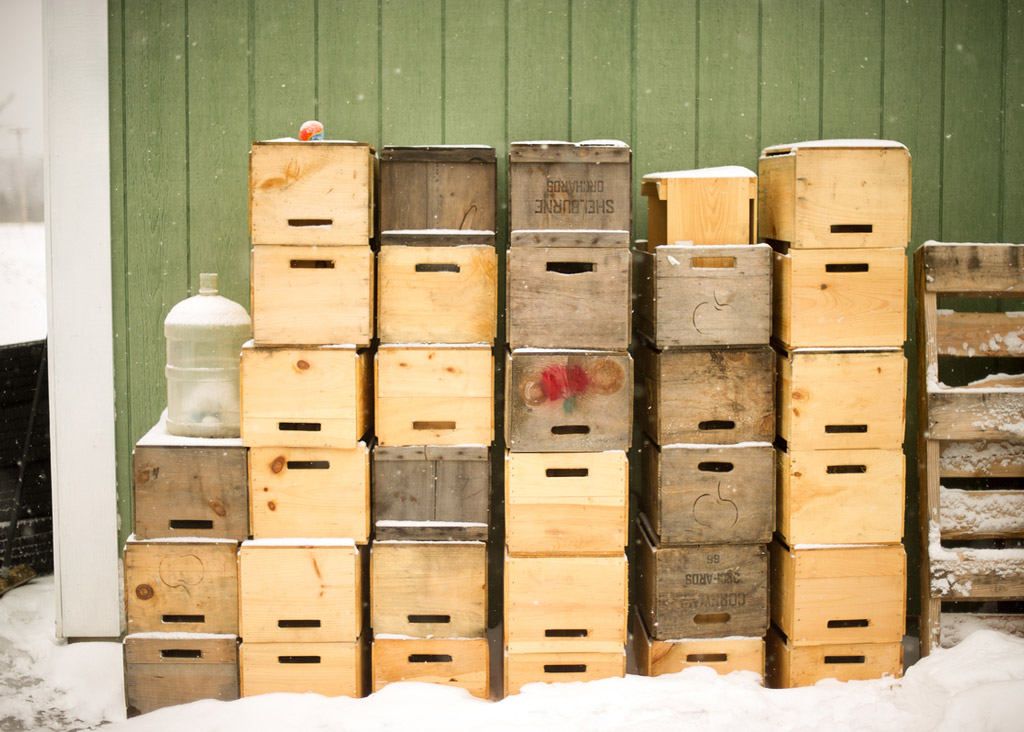
MHM: You make heritage cider. What does that term mean to you? And why that term anyway?
EL: The group of us that was trying to create a market for this kind of cider — Steve Wood, Diane Flynt, Autumn Stoscheck, Dan Wilson, and myself — we were doing trade tastings in New York, Chicago, and D.C., tasting dry to sweet, not producer by producer. And we kept saying, “What are we calling ourselves? What are we calling this kind of cider?” We went around for a while; we called it “American Fine Cider,” or “orchard-based cider,” but I’m like, every cider’s orchard-based. It comes from an apple. Anybody can claim “orchard-based cider.”
MHM: Like — “vineyard-based wine!”
EL: Exactly. So the United States Association of Cider Makers, of which I was a board member, decided we needed a lexicon project to help the market articulate different types of cider. Because poor consumers are facing this cider in a store and have nothing to go by to find one they actually like. Especially when they’re being asked to pay $16, $17, $18.
MHM: It’s like the Riesling problem. The dry-to-sweet problem.
EL: The New York State Association is working with Cornell and the people who developed the Riesling scale to develop the same kind of thing for cider. And it’s being fought by the big commercial producers who don’t want a scale on the label.
MHM: Right, because they don’t want to see theirs all the way at the sweet end. Let’s talk more about labeling, and the mosaic of federal and state laws with which you have to comply.
EL: It’s so crazy. We pay the champagne tax because it’s naturally sparkling and it’s not beer. If you’re over 7% ABV, the TTB approves the label; if you’re under 7%, the FDA/USDA approves the label. And in New Hampshire, if you’re under 6%, you can’t go in the State system — you have to go through beer distributors, because you’re at the beer level. Compliance is a nightmare, especially for little people. I’m not on the U.S.A.C.M. board anymore, but I’m like, guys, you need to put stuff on your website for little cider makers, because we don’t know what to do.
MHM: You have a complex portfolio, but ice cider is where you got your start, and it’s still a significant portion of your production. Is ice cider really a big market?
EL: No, it’s teeny. The ice ciders are wonderfully profitable. We don’t sell enough of them, but the margin is great: 50 percent. So that helps support some of the other stuff. But, do I make enough from this product to support the cost of managing the orchard? Hmm… not quite!
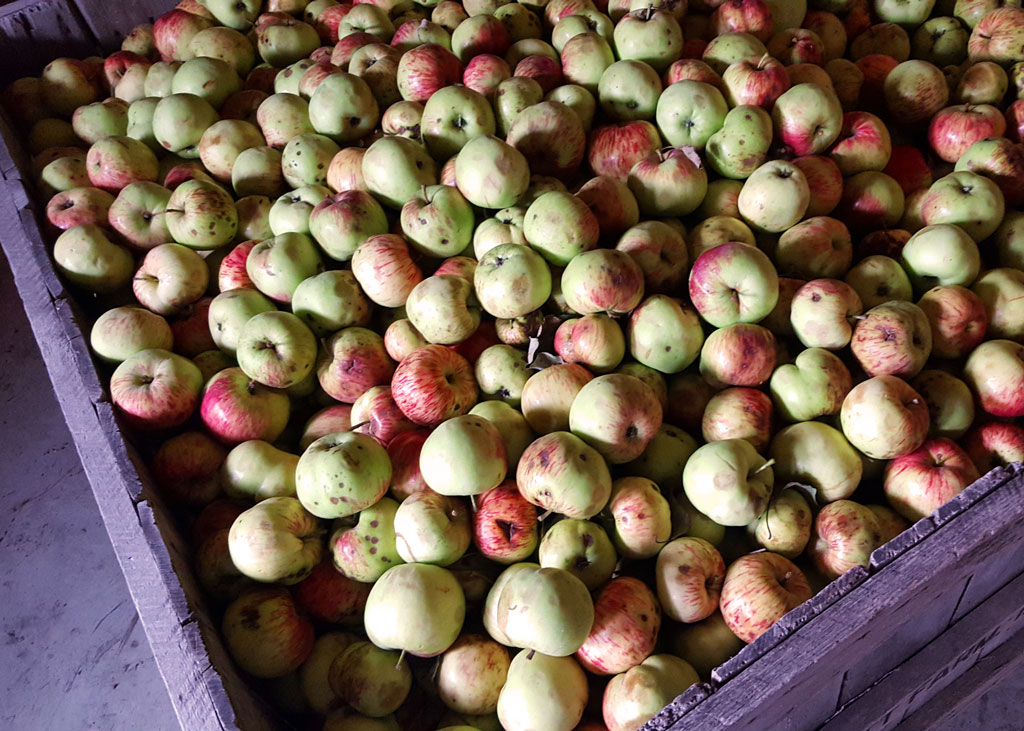
MHM: Your new canned cider seems designed to fit a commercial niche and also diversify your production. Is it mostly purchased fruit?
EL: There’s a little bit of our fruit in it, but it’s primarily purchased fruit, yes. It’s pomace fermented over Kingston Black.
MHM: So — it’s a ripasso. That gives it its little floral character.
EL: Yes, its oomph. That’s why you get so much flavor at 6.4% ABV with McIntosh and Empire. McIntosh is an incredibly aromatic apple when it’s at peak ripeness, but so many people in the Northeast, like Citizen’s or whatever, are pressing McIntosh out of cold storage all year round, every four weeks. That apple has no flavor by February. So the fact that we’re using Mac and Empire only pressed in October also gives it flavor.
MHM: Do you can it on demand, or did you can it all in one batch?
EL: We don’t have a can line. Woodchuck is canning for us, and we did four thousand gallons — because that was their minimum run.
MHM: What is your opinion of when force carbonation works, and when it doesn’t? Do you make the base cider differently if you know you’re going to force carbonate it versus bottle condition it?
EL: If you want residual sweetness, you can’t naturally condition, unless you’re going to do a disgorgement and dosage. So, if you feel like the blend of apples you’re working with needs some residual sweetness, or if you’re just intending to make a semi-dry cider, then your options are severely limited. I think a lot of people in the cider world don’t understand that.
MHM: Cider can’t legally be vintage-labeled, although producers circumvent this by putting batch numbers on the label. On the other hand, many cideries make multi-vintage products. Do you ever combine batches?
EL: The sparkling ciders, in their first incarnations, were half one season, half the next, because half of it used to be the last bit from our ice cider melting process. It had sugar and flavor, so we would ferment it out and age it to the next fall, then press the bittersweets and add the stuff as it was fermenting and bottle it before it finished. It was hard to explain and hard to manage. So now it’s all done together, and we bottle-condition it.
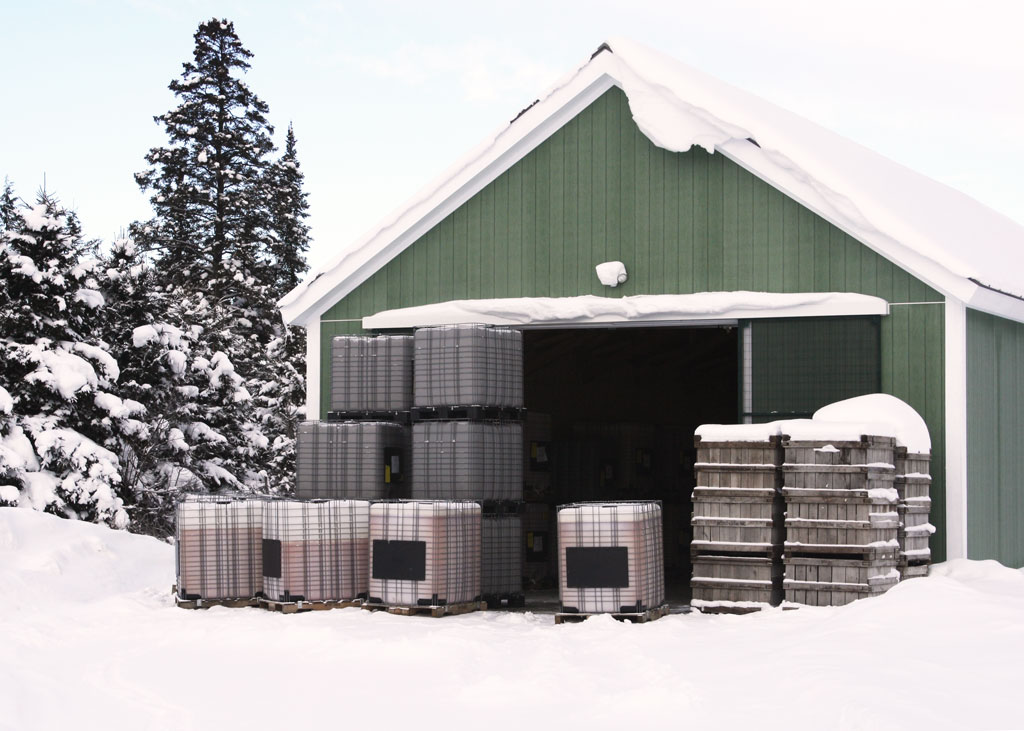
MHM: You’re barrel-aging some of the ice ciders. The Falstaff is perhaps an extreme example.
EL: That literally was stuff that didn’t fit in the tank, but it wasn’t enough to put it in another tank. We were like, Oh, let’s just stick it in a barrel. As people would come to visit, and we’d taste, they started saying, You need to bottle this! So, finally, seven years later….
MHM: So you’re continuing this experiment?
EL: Now we’re being a little more thoughtful about it. We have a 2012 barrel of Ashmead’s Kernel, which is the highest acid apple. This winter we’ll see if it’s ready or not.
MHM: It makes me wonder about a solera. Cider can obviously handle oxidation. The acidity is there. It can deal with the oak. You’d put your scraps into the top. Boom.
EL: Hmm — What size barrel? It’d be fun to do it in puncheon.
MHM: Yes, I think a large vessel. Even demi-muid. You’d need a lot of volume to create the solera, but over time it could be interesting.
EL: We’ve talked about it.
MHM: Is anyone aging ciders in apple wood barrels?
EL: Oh, wow, what a concept. Is anyone making apple wood barrels? I don’t know! I’ve never heard of it. It’s hard to get an apple tree big enough to make a stave.
MHM: So you’ve got aperitifs, ice ciders, sparking ciders, still ciders, dry and sweet. Where is your heart in this production? What’s the thing that you are really passionate about, just deeply love, and if you had to choose, would choose that one only?
EL: If it’s my heart? Cinderella’s Slipper. Because it’s my trees, and my apples, and all of the care to make it great, in a totally natural way.
MHM: It’s authentic, your own property.
EL: Terroir. It’s terroir. And all the choices are mine, ever.
TASTING NOTES

Eden Cinderella’s Slipper Still Dry Cider
Cinderella’s Slipper uses fruit only from Eden’s home orchard. In this 2016 batch (not yet released), twenty varieties were fermented dry with ambient cultures in stainless steel, then rested on lees until bottling unfiltered and un-sulfured. It’s a deep gold color and slightly cloudy but highly perfumed with aromas of straw, russet apple, red apple skin, apple blossom, acacia honey, and wet autumn leaves. It’s fully dry, tart, and crackly, with good tannic structure expressing itself at the back palate. It has a beautiful texture.
7.5% abv | $23 (750 ml)
Eden Brut Nature Dry Heritage Cider
A blend of bittersweets and heirloom apples aged eight months prior to bottling with a tirage of ice cider and champagne yeast. The cider aged sur lattes for seven months and was hand disgorged, with no dosage. The active, foamy pour subsides into a golden robe animated by tiny skeins of bubbles. The aromas are of clean white orchard fruit tinged with an earthy, savory-leesy note. It smells like early autumn. The dry palate fizzes in flavors of russet apple and almost-hops, with all of their flowery bitterness. Refreshing, savory, and concise.
8.0% abv | $15 (750 ml)
Eden Extra Sec Dry Heritage Cider
Like the Brut Nature, this is a blend of bittersweet and heirloom apples, aged eight months then bottled with a tirage of ice cider and champagne yeast. The cider aged on lees for seven months prior to hand disgorgement and was dosed with ice cider to a finished sweetness of 9 g/L. The result is fragrant, floral, and fey, with a fizzy pour that subsides into a quiet bead offering a fragrance of red apple skin, apple blossom, and lily of the valley. The tiny, active bulles deliver a mouthful of rusty orchard fruits and the savory tint of lees aging. Although it’s dosed, the fruit seems to play the role of sweetness here, while firm tannins add grip.
8.0% abv | $15 (750 ml)
Eden Heritage Cider
A blend of Kingston Black, McIntosh, Empire, Bulmer’s Norman, and Gravenstein apples, pressed at harvest and fermented dry with ambient cultures, then blended with a drop of Eden ice cider and force carbonated. It is the only Eden cider in a can. A medium yellow color with an active pour that subsides instantly, the cider delivers a delicious fragrance of red apple skin, apple blossoms, and ripe orchard fruits. The palate has firm and juicy acidity and crackles with a tannic back-story. Just enough fruit to be fun, just enough lift and structure to be refreshing.
6.2% abv | $16 (4-pack of 12-oz. cans)
Eden Two Ellies Cider
A transcontinental collaboration between Ellen Cavalli at Tilted Shed, in Sonoma, Calif., and Eleanor Léger at Eden. In 2016 each cidery made a batch from heirloom sharps — Tilted Shed used Gravenstein, Eden used Esopus Spitzenburg. The Sonoma cider was trucked east, then Eden bottle-conditioned the blend using a charge of champagne yeast and ice cider. Fully dry, the resulting un-sulfured, natural cider is pale yellow with aromas yellow apple and apple blossom, plus a little nut and biscuit. The active mousse is lightly cloudy, and the tannic finish has a faint leesy savoriness.
7.5% abv | $20 (750 ml)
Eden Ezekiel Kingston Black Cider
Made from Kingston Black cider apples from Scott Farm Orchard in Dummerston, Vermont, which is managed by Ezekiel Goodband — hence the name. Kingston Black is one of the few apples that can make a balanced varietal cider. The fruit was pressed, fermented, and aged in stainless steel for eight months prior to bottle conditioning. The cider is solid gold and effusively perfumed with red apple skin, rose hip, and apple and blackberry blossoms. The palate crackles with tannin and acidity, and the conditioning is just right, the mousse spumy and lifting but dissipating in a cleansing, bitter-sharp bite.
8.0% abv | $20 (750 ml)
Eden Siren Song Cider
A cider made from a range of tannic varieties, including crabapples, russets, and other high-acid heirloom apples from Scott Farm, Poverty Lane, and Heath Orchard. Golden-hued and medium sparkling, it has aromas that feel fresh and autumnal, like birch bark and beech leaves, with hints of ginger and white pepper. The slight sweetness counterbalances the cider’s strong tannic backbone, while flavors of russet apple, apricot, and almond round out the mid-palate. The finish is sour-sweet. It’s a great cheese cider; its sweetness is a foil for salty foods.
7.5% abv | $20 (750 ml)
Eden Guinevere’s Pearls Imperial Semi-Sweet Cider
This is a varietal cider made from Northern Spy apples, processed in December and cold-concentrated to 24° Brix, then fermented in stainless steel. The cider was filtered and force carbonated; 20 g/L of sugar remains. It’s a deep gold hue with an active pour that quickly quiets, and the aromas are apple-y and honeyed, with faint autumnal tinges. The palate has firm acidity and gets an additional prickly sharpness from the forced carbonation. Quite sweet but also juicy malic-tart, with snappy tannins at the finish.
11.0% abv | $20 (750 ml)
Eden Heirloom Blend Ice Cider
It takes an astonishing eight pounds of apples to make one 375-ml bottle of ice cider. Here’s the process: Pressed apple juice is first cold-concentrated outdoors in the volatile Vermont winters, where freeze-thaw cycles gradually stratify the watery top from the sugary bottom. The resulting juice has a Brix of 35°, and after fermentation retains about 150 g/L of residual sugar. Harvest 2007 was the first batch of Eden’s Heirloom Blend Ice Cider, and this batch, 2013, is a blend of Empire, McIntosh, Roxbury Russett, Calville Blanc, Cox’s Orange Pippin, Hudson’s Gem, Ashmead’s Kernel, Esopus Spitzenberg, Black Oxford, Belle de Boskoop, and Reinettes. It’s an elixir, amber gold, the palate a wash of caramel, dried apricot, and chestnut honey. Balancing acidity refreshes and ties it to food. It’s a perfect companion to an after-dinner cheese course.
10.0% abv | $25 (375 ml)
Eden Northern Spy Ice Cider
Eden’s varietal Northern Spy ice cider is made like its Heirloom Blend, but after fermentation it ages for a year in neutral French oak barrels. The robe is caramel colored, darkened by wood aging, and the cider’s aromatics and flavor profile are deeper, too, redolent of nut and spice, chestnut honey, vanilla, and caramel. Northern Spy is a high-acid apple variety, and here the acidity and sugar play off each other in shimmery, gingery waves.
10.0% abv | $25 (375 ml)
Eden The Falstaff Six-Year Cider
This ice cider, from 2011, aged in barrel for six years prior to release, a process that tinged it deep red-amber and suffused it with a fragrance that’s at once honeyed, woodsy, and shiny, its acidity aglow atop savory, caramel notes. The palate is sweet but, again, with firm acidity and a juicy core. All sweet dessert beverages need acid, and this delivers, spiking into the corners of my palate. Try it with pungent, salty cheeses, like Gouda, Mimolette, or the blues, or with caramel desserts like crème brûlée.
10.0% abv | $55 (375 ml)
Orleans Aperitif Ciders: Herbal, Wood, and Bitter
Orleans is a category-bending beverage. The process begins with fresh-pressed cider that gets cold-concentrated, then fermented dry to a finished alcohol of 16%. This cider is then infused with decoctions of botanicals or fruits. Herbal incorporates basil and anise hyssop and is a cooling aperitif served over ice with a twist of citrus. Wood is spiked with wormwood, spruce tips, sweet gale, and wild mint, then smoothed by a little raw honey; it’s an earthy, woodsy option in cocktails. Bitter incorporates dandelion, gentian, angelica, and red currant, which gives it a flare of red fruit at the finish; try it in a Negroni, or mix it with sparkling cider for a ridiculously better version of Aperol Spritz.
16.0% abv | $34 ea. (750 ml)
This interview has been edited and condensed.
All ciders were samples for review.

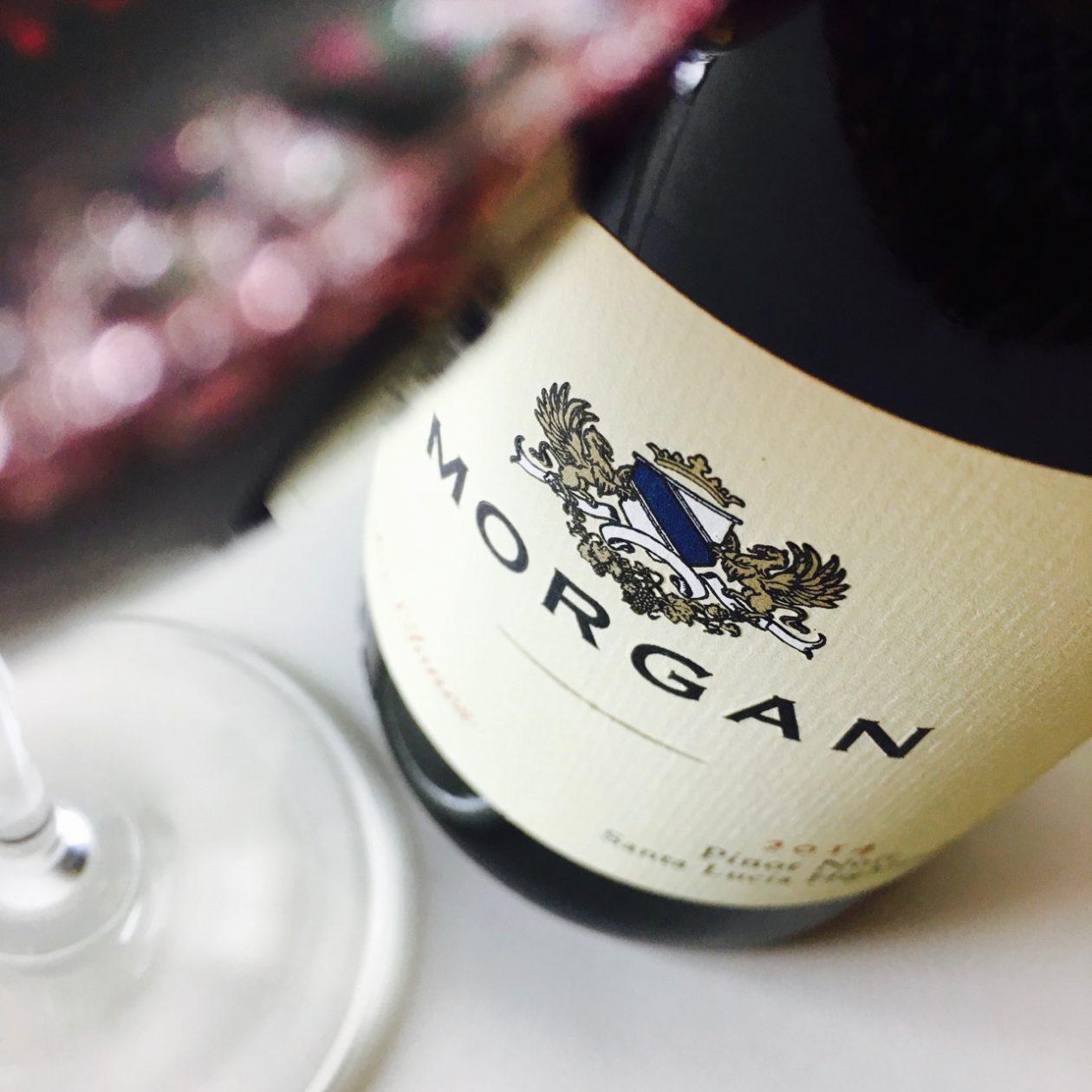
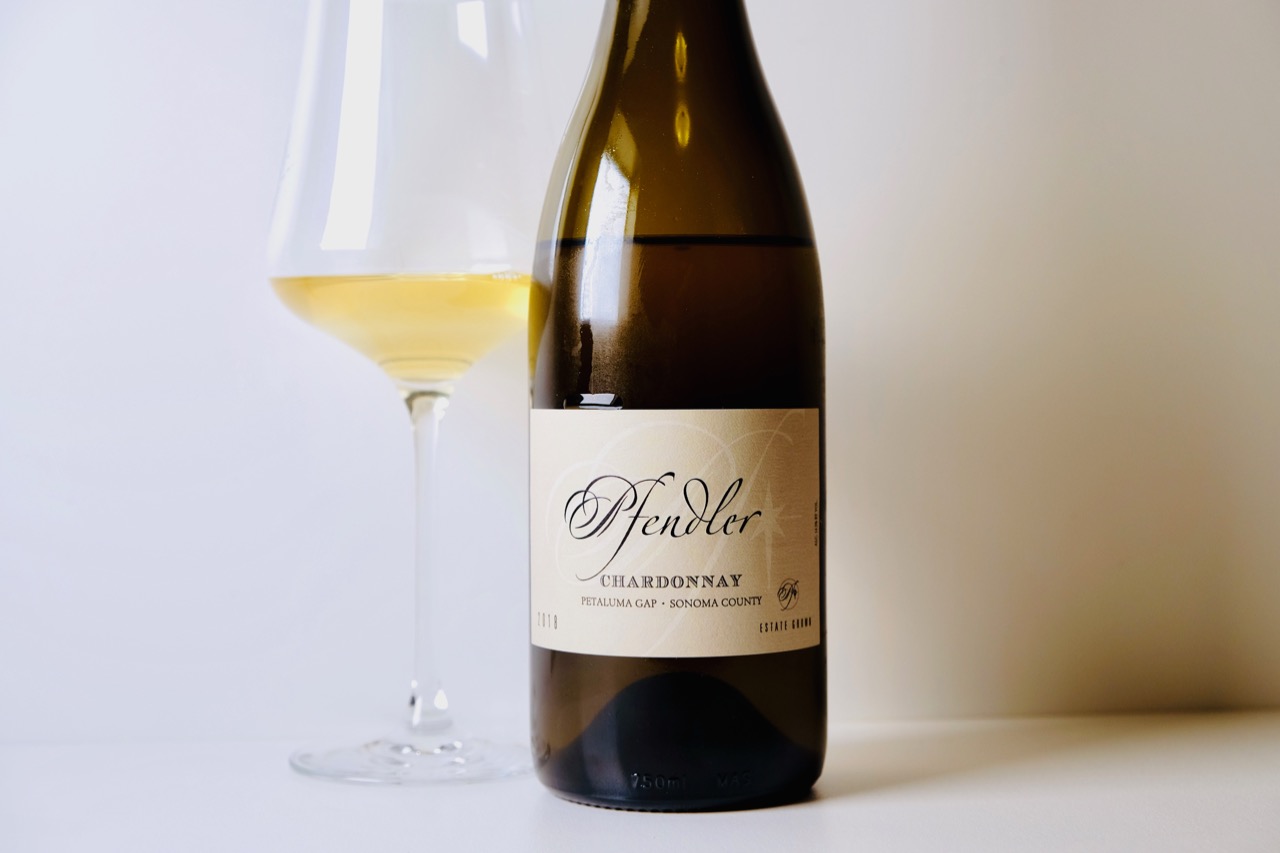
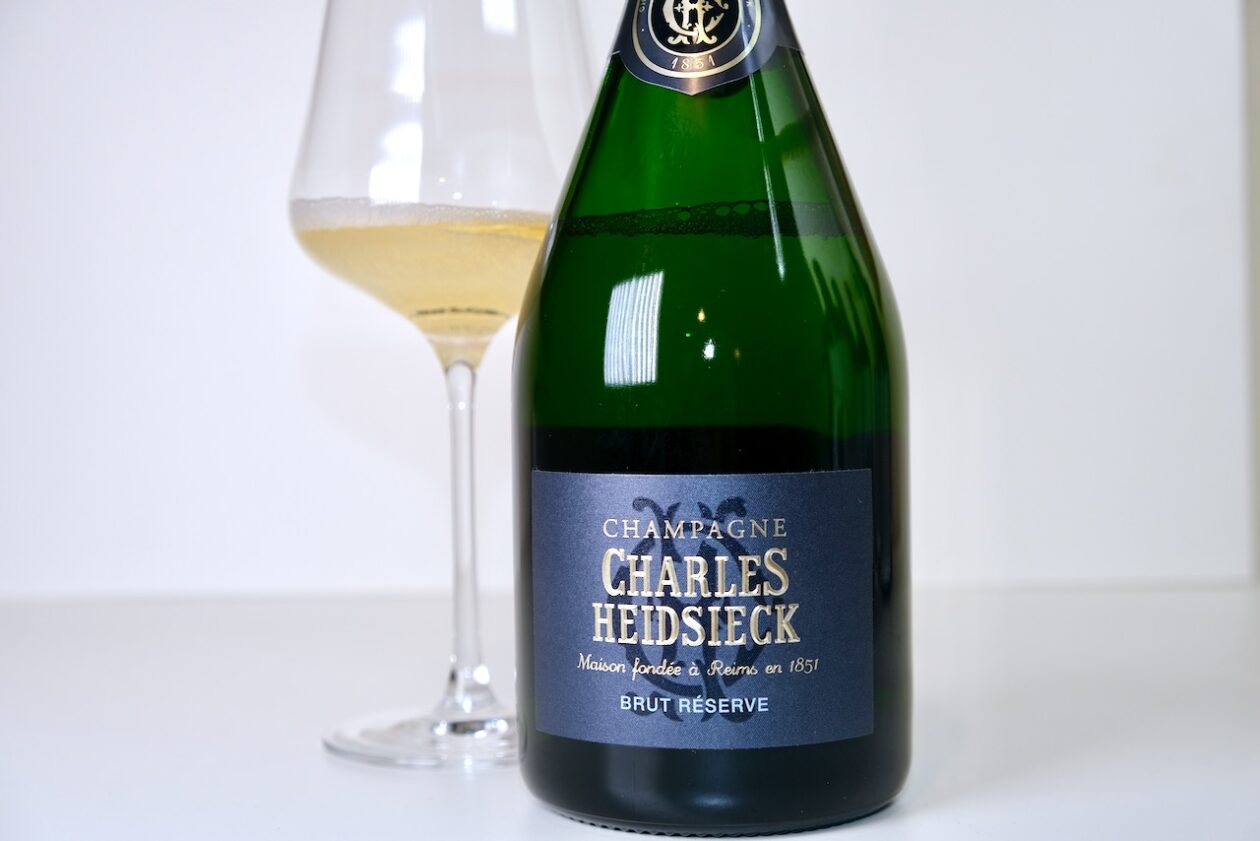
Fascinating stuff. Thanks Meg, and happy new year!
Thank you for reading, David. Happy new year to you, too!